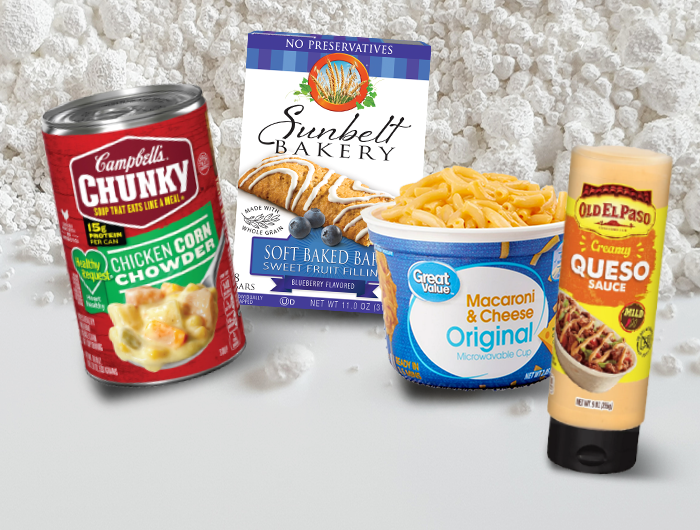Titanium dioxide

Rating: Avoid
What is titanium dioxide?
Titanium dioxide (TiO2) is a color additive currently approved for use in the U.S. in human food, drugs, cosmetics, and medical devices (e.g., contact lenses).
What foods contain titanium dioxide?
It can be found in baked goods, chewing gum, chocolate, puddings, hard-shelled candies, frosting, dressings, sauces, and coffee creamers, among other food products, where it imparts a white color.
Is titanium dioxide safe?
Titanium dioxide was recently banned from use in food in Europe over concerns that it could harm human health. Based on evidence that titanium dioxide nanoparticles present in food-grade titanium dioxide could accumulate in the body and cause DNA damage and given that titanium dioxide is an unnecessary additive, CSPI rates titanium dioxide as “Avoid.”
A quick review of titanium dioxide’s safety
The European Food Safety Authority (EFSA) has reviewed the safety of titanium dioxide several times in recent years. Most recently, in a March 2021 evaluation, EFSA concluded that food-grade titanium dioxide (called “E171” in the EU when used in food) was no longer considered safe to use as a food additive due to concerns that very small titanium dioxide particles called nanoparticles could accumulate in the body and cause genotoxicity, i.e., damage DNA. Owing to a lack of appropriate studies, there is no direct proof that titanium dioxide does cause cancer, but genotoxicity is one possible way chemicals can cause cancer and other adverse health outcomes. The panel also noted additional concerns including possible immunotoxicity (i.e., harm to the immune system).
On the basis of this EFSA review, titanium dioxide has been banned in the EU.
Different authorities have come to different conclusions about the safety of titanium dioxide. In the US, the FDA has not independently reviewed the safety of titanium dioxide since the 1960s, when it was originally approved for use in foods. Health Canada’s Food Directorate concluded that titanium dioxide is safe for use as a food additive after reviewing the chemical in 2022, although it noted that there are uncertainties. The differences in conclusions between EFSA and Health Canada primarily relate to which studies each agency considered relevant. Health Canada considered studies with food-grade-comparable titanium dioxide to be most relevant, meaning if a study were performed with titanium dioxide nanoparticles alone, they generally didn't include it in their safety assessment.
This distinction is critical. The specifications for “food-grade” titanium dioxide in the US and Canada make no mention of nanoparticles, and food-grade titanium dioxide has been shown in some studies to contain a large percentage of nanoparticles—one study found that 74 percent of titanium dioxide particles in one sample of food-grade TiO2 were nanoparticles. Consequently, EFSA considered studies on titanium dioxide nanoparticles to be relevant for assessing food-grade titanium dioxide. These were generally the studies that raised the concerns related to genotoxicity and immunotoxicity.
Additional studies appropriately designed to assess titanium dioxide nanoparticles’ capacity to induce cancer and other adverse effects could change this determination. Until those studies are completed, cautious consumers can choose to avoid titanium dioxide by reviewing ingredient labels. However, titanium dioxide may not explicitly appear on food labels and instead may be hidden behind vague terms such as “artificial color” or “color added.”
References
- Weir A, et al. Titanium Dioxide Nanoparticles in Food and Personal Care Products. Environ Sci Technol. February 21, 2012; 46(4): 2242-2250.
- Lomer MCE, et al. Determination of Titanium Dioxide in Foods Using Inductively Coupled Plasma Optical Emission Spectrometry. Analyst. 2000; 125: 2339-2343
- European Food Safety Authority. Safety Assessment of Titanium Dioxide (E171) as a Food Additive. EFSA J. 2021; 19(5):6585
- Food Directorate, Health Canada. State of the Science of Titanium Dioxide (TiO2) as a Food Additive. Health Canada. June 2022.
- 21 CFR.§73.575. Titanium dioxide.
- Verleysen E, et al. Physicochemical Characterization of the Pristine E171 Food Additive by Standardized and Validated Methods. Nanomaterials (Basel). March 24, 2020; 10 (3): 592

